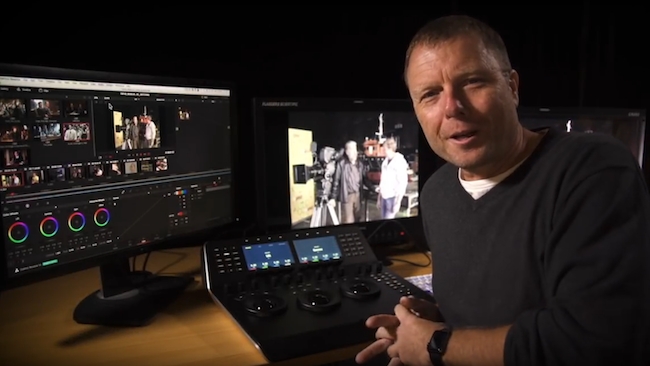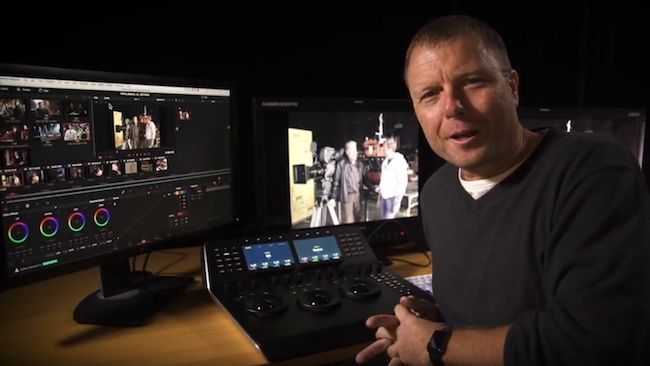
 Ready to do it all again 10 years on. A few things might have changed...
Ready to do it all again 10 years on. A few things might have changed...
Relationships between DPs and Colorists can often be fraught and full of tensions but, as noted freelance colorist Warren Eagles writes, it really doesn't have to be that way. Here are five things Colorists can do to ease the pain.
1. "Don't stamp on my images"
I am hearing this more and more from DPs. Stamp means the picture is over worked, too many layers or nodes and too many windows and keys. This can make the image look too false because the look has been changed from where it was shot. Remember a DP has lit and exposed a scene a certain way, because he/she wanted it that way.
I think shooting Log, and having to grade the contrast back in has something to with this. Colorists are over-compensating so making the image more contrasty than originally intended.
I know sometimes you have to use lots of layers and OFX plugins to get a pleasing image, but these original images are more often than not shot by more inexperienced DPs on lesser cameras.
2. Get to know your camera formats
When I first started grading film we had one layer of color correction. The way you used the primary tools was vital, we had no secondaries or window shapes.
I had two possible sources, either Kodak or Fuji film. I knew all the film stocks very well and they all behaved differently on the different Telecine machines I was using at the time.
The same rules apply today, get to know your camera formats and codecs. The more you know the pros and cons of each the better grader you will be. Remember the primary controls are king.
3. Multiple nodes: don't try too hard
I know it’s hard to just ‘do the simple grade’ especially when you are working with a more experienced DP or director. You want to impress by doing lots to the image. Don’t get into the trap of thinking the more complicated the grade the better it will be. Keep it simple.
4. Invite the DP in
DPs are often busy when the grade takes place, so cannot attend. Sometimes they are not invited as their presence might slow the grading process.
That’s not my opinion, I love having DPs in the room. They learn more about their images and what can be achieved in the color suite and I learn more about shooting. Send WIP stills or small QT movies to the DP. It helps to promote the relationship and makes them feel involved in the process
5. Offer to grade a short film for a DP
The relationship between the DP and Colorist has never been closer. As graders we are constantly getting asked to work for less than our rate on passion projects or low budget first time films. Take on one of these projects. You will learn from the DP and will get something you can use on your reel. It’s all about building relationships, it doesn’t happen easily you have to work at it.
Warren Eagles is a freelance Colorist working in Brisbane Australia. A decade ago he produced a series of ground-breaking grading tutorial videos for fxphd using both da Vinci 2K Plus and Resolve 6 which you can see for free here. Next month fxphd plans to release three brand new Resolve 14 courses: one for beginners, one for advanced users, and the third covering looks and matching. They won’t be free but we’ll let you know when they’re available. See more about them, and the retro tutorials, below.
Tags: Post & VFX


Comments